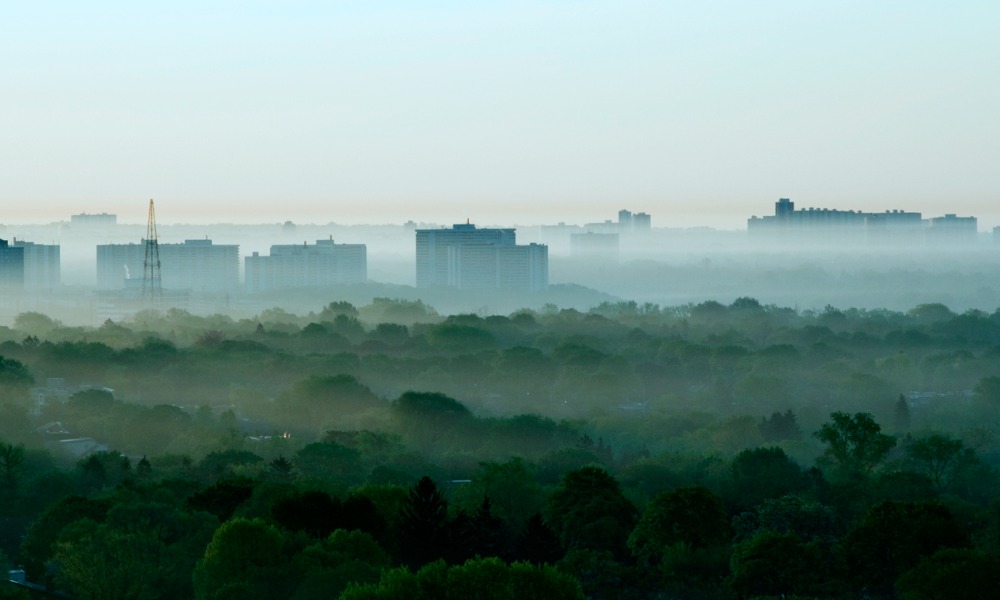In its 2019 Environmental Rule of Law Report, the UN noted an increase in environmental laws enacted. However, implementing and enforcing these laws are some of the biggest challenges in reducing pollution.
Businesses that contribute to pollution such as factories and manufacturers should follow air pollution regulations. They are subject to fines and sanctions if not followed.
What is air pollution regulation in Canada?
Regulation of air pollutants is the subject of Canadian environmental laws, whose interpretation and application are best explained by environmental lawyers. These laws and regulations also set out specific entities (i.e. companies and businesses) that are required to comply with them.
Compliance with these air pollution regulations is not only to evade liabilities on the part of these entities, but also to continue doing business in the country.
Canadian laws on air pollution regulation
The Canadian Environmental Protection Act, 1999 (CEPA 1999) is the most significant law on health and environment at the federal level.
As an enabling law, other regulations on various matters are enacted, such as for regulation of certain toxic chemicals, disposal of wastes, among others. Read our article for a summary of highlights of the Environmental Protection Act.
When it comes to air pollution regulation, the CEPA 1999 has paved the way for other regulations, such as the Multi-sector Air Pollutants Regulations (MAPR).
The MAPR sets the standards for air pollution emission across the country for several industrial sectors. It also limits the amount of nitrogen oxides (NOx) and sulphur dioxide (SO2) which are emitted from:
- cement kilns
- heaters
- gaseous fuel-fired non-utility boilers
- stationary spark-ignition gaseous fuel-fired engines
The provinces and territories have also banded to create and implement the Air Quality Management System (AQMS).
This system is also coupled with the establishment of Canadian Ambient Air Quality Standards (CAAQS), which drives improvement of air quality across the country.
Other air pollution regulations under the CEPA 1999
Below are other significant regulations under the CEPA 1999:
- Passenger Automobile and Light Truck Greenhouse Gas Emission Regulations
- On-Road Vehicle and Engine Emission Regulations
- Sulphur in Diesel Fuel Regulations
- Sulphur in Gasoline Regulations
How does air pollution regulation work in Canada?
Businesses that handle, produce, or uses the following chemicals under these categories may be subject to Canada’s air pollution regulations:
-
criteria air contaminants: pollutants that cause smog and acid rain, which are produced by burning fossil fuels and other sources. Examples: SO2, NOx, and Volatile Organic Compounds
-
persistent organic pollutants (POPs): pollutants that can last longer in the environment, travel long distances, and possibly enter the food supply. Examples: dioxins and furans
-
heavy metals (HM): pollutants that can be transported by the air and enter the water and food supply, which are dangerous even in low concentrations. Examples: mercury and lead
-
toxics pollutants: a broad category for other pollutants that are toxic to humans and the environment. Example: benzene
Specific air pollutants covered by the law
Schedule 1 of CEPA 1999 provides a list of pollutants subject to government control and regulation. These pollutants must be reported to the National Pollutant Release Inventory (NPRI), a public inventory of the pollutants’ releases, disposals, and transfers.
Watch this video to know more about the NPRI, including who must report to this program and its requirements:
If you’re in Calgary or in other areas of Alberta, know more about its air pollution regulations by consulting with the Lexpert-ranked best environmental lawyers in Alberta.
Ways of regulating air pollutants
CEPA 1999 requires the following, depending on who is responsible:
|
Entity responsible |
Action required |
|
entities that release toxic substances |
prepare and implement plans to reduce or eliminate the environmental and health risks by toxic substances
|
|
facilities that export wastes for final disposal |
prepare and implement plans to ensure that exports are reduced
|
|
entities whose air or water pollutants affect other countries |
develop and implement pollution prevention plans or regulations
|
As for new substances that may or may not be considered toxic, the law requires that they be subjected to CEPA 1999’s risk assessment framework.
Under this framework, risk assessments may be required to determine if the substance is considered toxic under the CEPA 1999.
Provincial air pollution regulation
Aside from the federal laws regarding environmental protection, provinces have also enacted laws related to air pollution regulation and air quality management.
Here are some examples of these laws:
-
Alberta: regulations under the Environmental Enhancement and Protection Act
-
British Columbia: regulations under its Environmental Management Act
-
Ontario: Air Pollution — Local Air Quality under its Environmental Protection Act
Requirements under provincial air pollution regulations
While CEPA 1999’s air pollution regulations apply to businesses, they must also be wary of the requirements under these provincial regulations.
This is where local environmental lawyers come in, who are experts in the overlapping requirements set by the federal and provincial levels of government.
Here are some matters that are enacted by provincial air pollution regulations:
-
requiring permits and licences at the regional or municipal level from businesses that are considered as industrial and commercial sources of air pollutants
-
setting up emission standards under different policies to minimize emissions and ensure air quality while allowing business operations
-
setting reportorial requirements from businesses regarding their air emissions, to assess if they do not exceed from the established emission standards
Penalties of provincial air pollution regulations
When these provincial air pollution regulations are violated, provinces impose different penalties, which may also overlap with one another:
- administrative penalties and fines
- environmental protection order (or other similar orders)
- imprisonment for individuals
Who regulates air pollution in Canada?
Overall regulation of air pollution is with the federal Environment and Climate Change Canada (ECCC). This is aside from the provincial and territorial regulators, such as the health and environment departments of these governments.
The different environment ministers from the federal, provincial, and territorial governments forms the Canadian Council of Ministers of the Environment (CCME).
Consult with the best environmental lawyers in Canada as ranked by Lexpert to learn more about Canada’s air pollution regulations.





